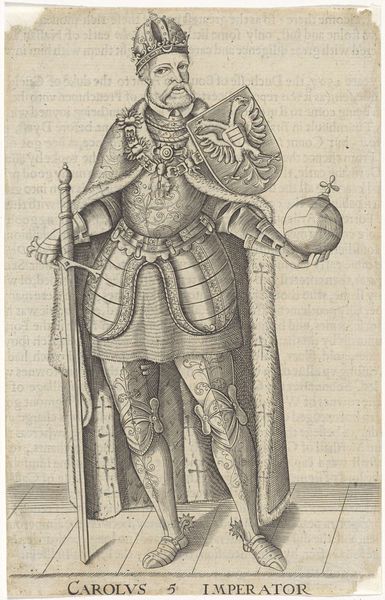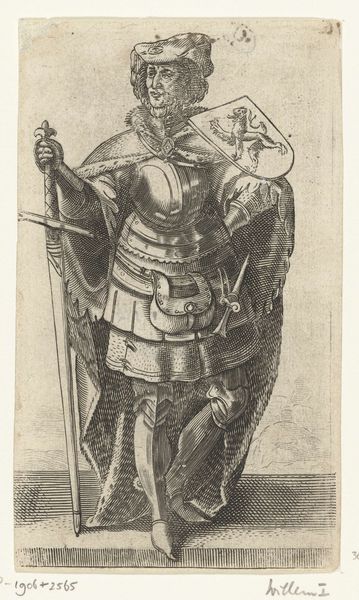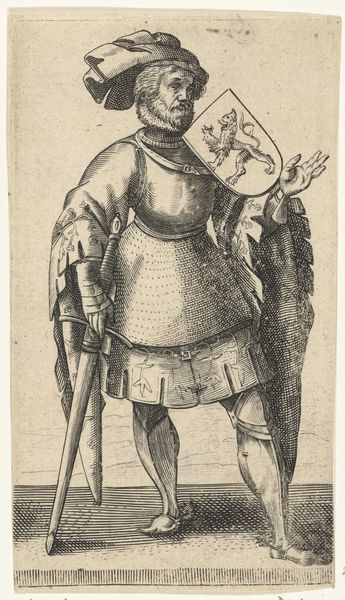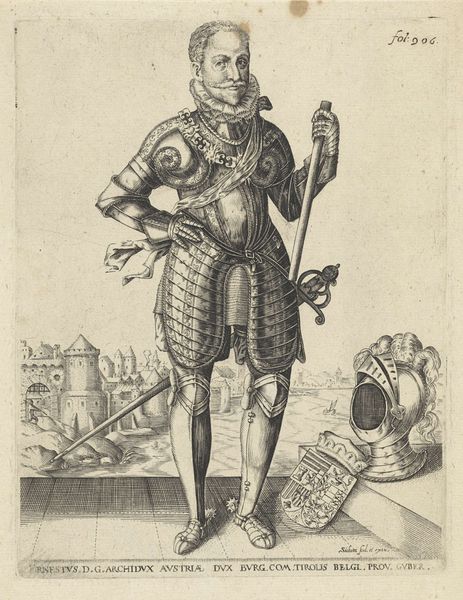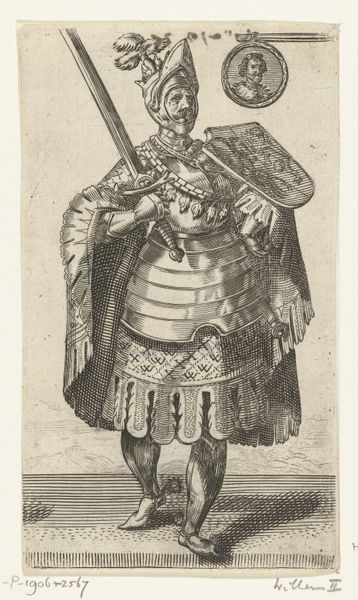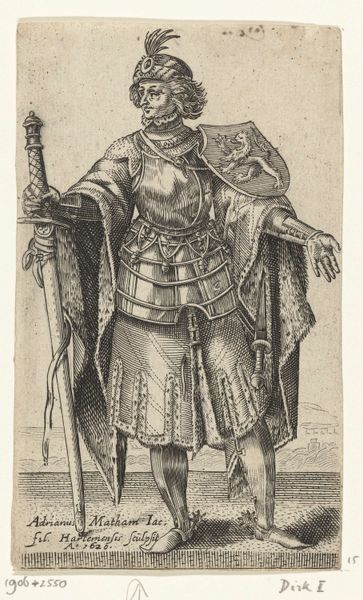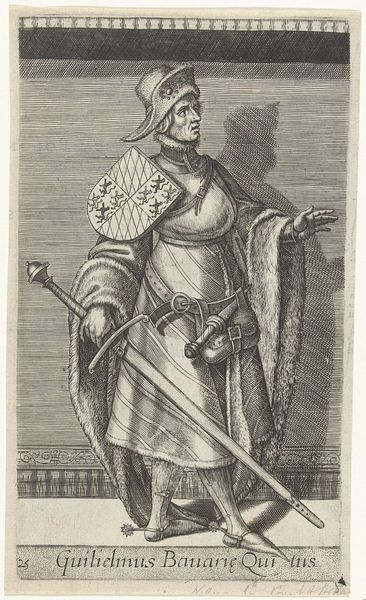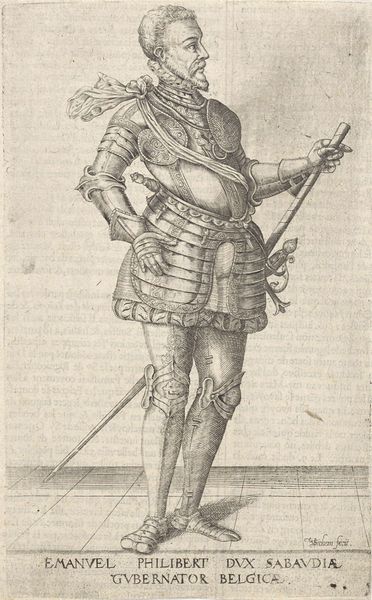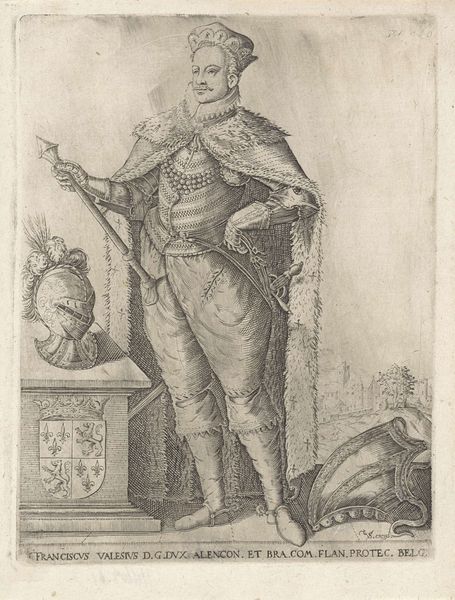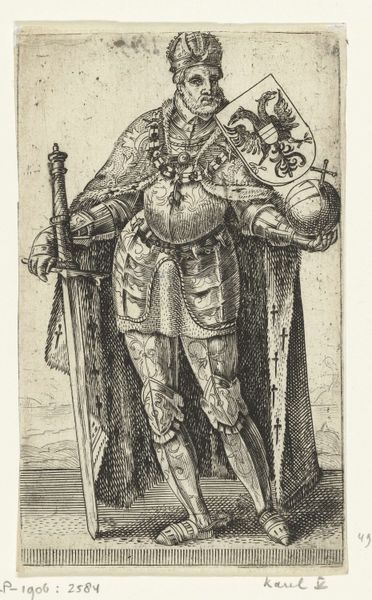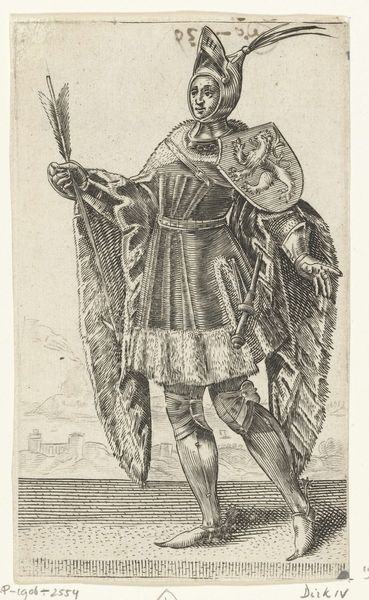
Portret van Karel V van Habsburg, Duits keizer, koning van Spanje before 1601
0:00
0:00
christoffelvansichemi
Rijksmuseum
drawing, print, engraving
#
portrait
#
drawing
# print
#
11_renaissance
#
history-painting
#
northern-renaissance
#
academic-art
#
engraving
Dimensions: height 192 mm, width 117 mm, height 258 mm, width 117 mm
Copyright: Rijks Museum: Open Domain
Editor: This print, “Portrait of Charles V, Holy Roman Emperor, King of Spain” by Christoffel van Sichem I, dates back to before 1601 and is currently held at the Rijksmuseum. The emperor is presented with symbolic objects of power—globe, shield, sword. What statements do you believe that this engraving tries to make? Curator: Well, at first glance, the print speaks to the consolidation of power during the early modern period. Note how Charles is laden with signifiers of authority: the crown, the orb representing his dominion over the world, the sword symbolizing military might, and the shield proclaiming his lineage and territorial claims. Consider this within the context of the Reformation and the rise of nation-states; how do you think such imagery functioned in constructing a specific, and deliberately imposing, identity for Charles V? Editor: I see how those symbols contributed to a sense of overarching power. Do you see any contradictions or tensions within this representation? Curator: Absolutely. While seemingly projecting an image of invincibility, the print also subtly acknowledges the anxieties of ruling over a fractured empire facing internal religious conflict and external pressures from rival powers. Also consider the rise of printmaking itself and its role in disseminating, and potentially contesting, such imagery. The text at the bottom mentions conflict with France and "rebellious Germans," hinting at those fissures. So, is this portrait merely a glorification, or does it inadvertently reveal the cracks in Charles’s imperial facade? Editor: It's amazing to consider how seemingly straightforward symbols of power also carried more complex meanings and anxieties. I hadn't thought about it that way before! Curator: Exactly! Examining art through its historical context reveals the negotiations of power, identity, and the socio-political climate embedded within the image. What was originally perceived as simply powerful becomes more dimensional.
Comments
No comments
Be the first to comment and join the conversation on the ultimate creative platform.

